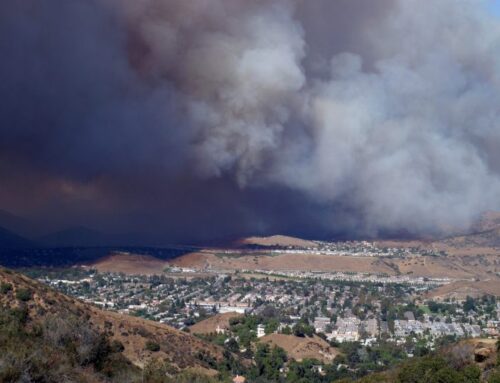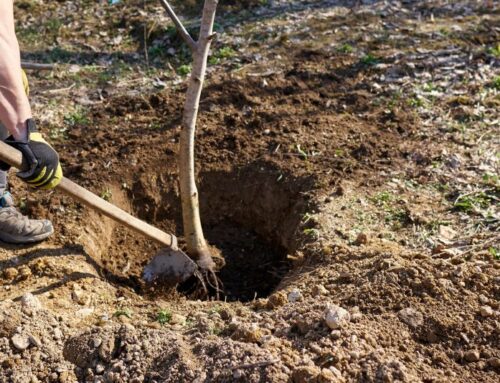Selecting the right species is the first, and one of the most important steps, in planting a new tree.
Trees live for a long time, so be sure sure to plant the right tree in the right place. Below is a list of species that often end up problematic in California urban environments.
Unless you have a lot of space or are willing to spend a lot of extra TLC, avoid planting these species.
1. Monterey Pine (Pinus radiata)
Monterey pines are highly susceptible to pine pitch canker infections. This fungus girdles the tree's branches, cutting off all water supply. As a result, extensive leaf dieback occurs throughout the tree.
Bark beetles also frequently attack Monterey pines. These pests form galleries inside the tree's wood, feeding on the inner bark. This disrupts sugar transport inside the tree and weakens overall tree structure. Once a tree is invaded by bark beetles, little can be done to successfully remove them because the pests are protected underneath the bark.
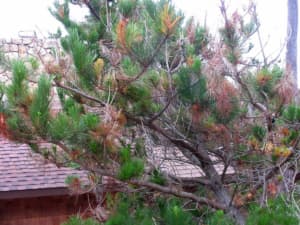
Pine pitch canker causing leaf dieback.
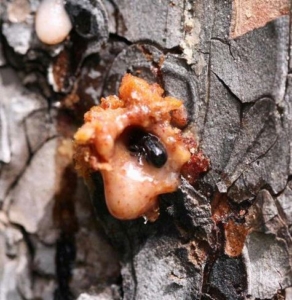
Pine bark beetle attempting to burrow into tree trunk.
2. Sweet Gum (Liquidambar styraciflua)
Once a highly popular tree, sweet gums are falling out of favor. They certainly have attractive fall colors, but come with some downsides.
Sweet gum roots are highly invasive, often growing near the soil surface and damaging sidewalks, pavements, and other infrastructure. The species also produces prolific hard, round fruits that litter the ground and are often a tripping hazard.
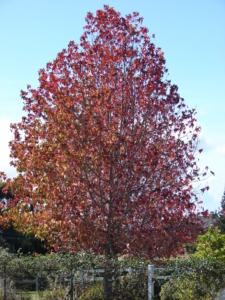
Sweet gum trees have attractive fall foliage.
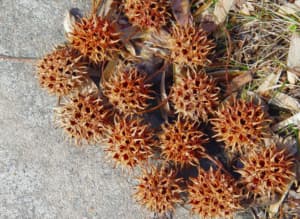
Sweet gum fruits.
3. Ornamental and Evergreen Pears (Pyrus calleryana and P. kawakamii)
Pears in general are prone to fire blight, a bacteria that causes leaves, flowers, and fruits to blacken and die.
If infected areas aren't removed, the entire tree can be killed. This requires a lot of maintenance and monitoring because the disease overwinters on the tree and spreads easily by rain and insects.
Ornamental and evergreen pears also have poor branching structure that requires intensive pruning to balance out the canopy and reduce risk of branch failure.
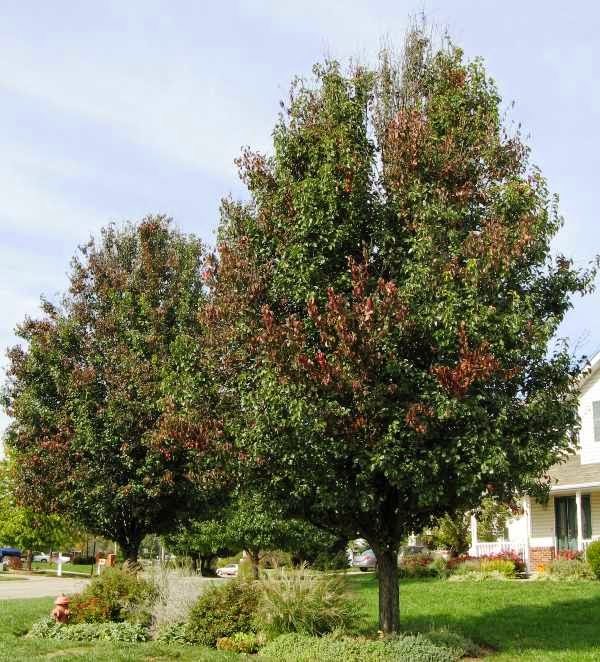
Fire Blight in Bradford Pear.

Fire blight causing leaf dieback on pear tree.
4. London Plane Tree (Platanus x hispanica)
London Plane Trees reach very large sizes at maturity, up to 85 ft tall and 70 ft wide (source: SelecTree).
Plenty of space is needed to accommodate their spreading growth habit. They are also highly susceptible to sycamore anthracnose, a fungal disease. Sycamore anthracnose causes stem cankers, leaf spots, and shoot dieback. The fungal spores spread easily in wet weather and overwinter on the tree, enabling them to infect new branches and trees nearby.
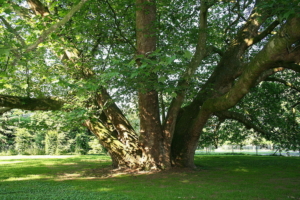
London plane trees can reach large sizes at maturity.
5. Eucalyptus (Eucalyptus spp.)
Many eucalyptus trees are native to the Mediterranean climates of Australia, so they grow well in the Mediterranean climates of California. However, that doesn't mean they're suited to smaller urban landscapes and near infrastructure.
Eucalyptus are fast-growing trees, often growing several feet a year and reaching heights of 100 ft or more at maturity. On top of that, they are highly prone to branch and root failures, especially during rainstorms.
There are some Eucalyptus small varieties that could be acceptable and well-suited for drought-tolerant conditions, but they are not common to find in local nurseries.
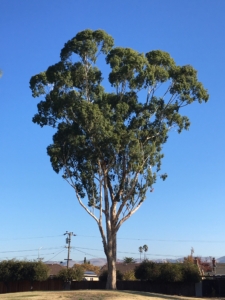
Eucalyptus trees can grow over 100 ft tall at maturity.

